Cataracts
Preserve Your Vision and Reduce the Risk
Cataracts are a well-known eye condition often associated with aging. By the age of 80, more than half of the US population either has a cataract or has undergone cataract surgery.
Understanding Cataracts
Inside your eye, there is a clear natural lens. However, over time, changes in the eyes can cause the breakdown of the lens proteins, resulting in cloudiness. Viewing objects through a cataract may cause hazy, blurry, or less vibrant vision.
Cataracts typically develop in both eyes, although the progression may not be equal. As a result, there can be a noticeable difference in vision between the two eyes.
In addition to the vision changes mentioned above, other symptoms of cataracts may include:
- Increased sensitivity to glare and light
- Yellowing of colors
- Dim vision
- Double vision in one eye
- Needing more or brighter light for reading and similar activities
- Difficulty with driving, especially at night
- Seeing rings or halos around lights
Risk Factors for Cataracts
While cataracts are commonly associated with aging, certain risk factors can increase the likelihood of developing cataracts or experiencing their onset earlier in life. These risk factors include:
- Excessive exposure to sunlight
- Previous eye surgery
- Excessive alcohol consumption
- High blood pressure
- Diabetes
- Prolonged use of corticosteroid medications
- Previous eye inflammation or injury
- Obesity
There is also a significant genetic component to cataract development. If your parents, siblings, or other family members have had cataracts, your own risk of developing them increases.
Reducing and Preventing Cataracts
While cataracts are a natural part of the aging process for many individuals, several strategies can help slow their progression or delay their onset:
- Regular eye exams: Comprehensive eye exams are crucial for detecting early signs of cataract development. Your optometrist can provide guidance and recommend lifestyle changes to promote eye health.
- Sun protection: Ultraviolet rays from the sun can contribute to cataract development. Wearing sunglasses that block UVB rays and a hat when outdoors can help protect your eyes.
- Healthy lifestyle choices: Maintaining a balanced diet rich in vegetables and fruits supports a healthy weight and provides essential vitamins and minerals for your eyes. Limiting alcohol consumption and quitting smoking also contribute to better eye health.
Diagnosis and Treatment of Cataracts
A definitive diagnosis of cataracts can only be provided by your eye doctor. Various tests, including a slit-lamp exam, visual acuity test, and retinal exam, can assist in the diagnosis.
In the early stages, prescription glasses may help address the changes in vision caused by cataracts. However, when glasses are no longer effective, surgery is often recommended.
At Meridian Vision, we are dedicated to preserving the health of your eyes. Contact us or schedule an appointment online, and let us help you protect your vision for years to come.

